Showing Spotlights 41 - 48 of 546 in category All (newest first):
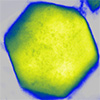 Researchers have developed an effective nanomedicine for catalytic ROS-scavenging and ultrafast healing of inflammatory wounds. This groundbreaking work holds the potential to pave the way for developing artificial biocatalysts to treat chronic inflammatory diseases, ultimately improving the lives of millions of diabetic patients worldwide.
Researchers have developed an effective nanomedicine for catalytic ROS-scavenging and ultrafast healing of inflammatory wounds. This groundbreaking work holds the potential to pave the way for developing artificial biocatalysts to treat chronic inflammatory diseases, ultimately improving the lives of millions of diabetic patients worldwide.
Mar 29th, 2023
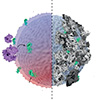 A timely review covers the current state of protein corona research in nanomedicine, highlights challenges in research methodology and characterization, and discusses the role of artificial intelligence in advancing the field.
A timely review covers the current state of protein corona research in nanomedicine, highlights challenges in research methodology and characterization, and discusses the role of artificial intelligence in advancing the field.
Mar 27th, 2023
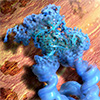 RNA nanotechnology is an emerging field that combines the unique properties of RNA with the principles of nanotechnology to create new and innovative applications in medicine, biotechnology, and materials science. Here we give an overview of RNA's potential in drug delivery, diagnostics, vaccine development and gene therapy.
RNA nanotechnology is an emerging field that combines the unique properties of RNA with the principles of nanotechnology to create new and innovative applications in medicine, biotechnology, and materials science. Here we give an overview of RNA's potential in drug delivery, diagnostics, vaccine development and gene therapy.
Mar 15th, 2023
 Nanotechnology has the ability to completely transform the health care sector, particularly in developing countries like South Africa, where access to effective healthcare is still a challenge for millions of people living in poverty-stricken environments. Many African countries, despite having policies and strategies in place, struggle to allocate sufficient resources for research in nanomedicine. Most of the research conducted on the subject in Africa is focused on academic interests, rather than practical applications.
Nanotechnology has the ability to completely transform the health care sector, particularly in developing countries like South Africa, where access to effective healthcare is still a challenge for millions of people living in poverty-stricken environments. Many African countries, despite having policies and strategies in place, struggle to allocate sufficient resources for research in nanomedicine. Most of the research conducted on the subject in Africa is focused on academic interests, rather than practical applications.
Jan 15th, 2023
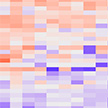 Its significance of the protein corona for biomedical applications lies in its role of imparting a unique biological identity to the nanoparticle, which could be very different from the pristine nanoparticle surface. Robust characterization of the identity and abundance of the protein corona is entirely dependent on liquid chromatography coupled to mass spectroscopy. Unfortunately, the variability of this technique for the purpose of protein corona characterization remains poorly understood.
Its significance of the protein corona for biomedical applications lies in its role of imparting a unique biological identity to the nanoparticle, which could be very different from the pristine nanoparticle surface. Robust characterization of the identity and abundance of the protein corona is entirely dependent on liquid chromatography coupled to mass spectroscopy. Unfortunately, the variability of this technique for the purpose of protein corona characterization remains poorly understood.
Nov 3rd, 2022
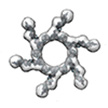 Therapeutic nucleic acids (TNAs) and nucleic acid nanoparticles (NANPs) are designed to enact specific intracellular responses beneficial for various biomedical applications. TNAs become especially attractive to researchers and clinicians since their functional versatility, programmability and modularity show great promise for treating disorders such as viral infections, cancers, and genetic disorders. Scientists explore how the immune responses to NANPs change with various factors such as dimensionality (3D vs. 2D), composition (DNA vs. RNA), and functionalization with TNAs.
Therapeutic nucleic acids (TNAs) and nucleic acid nanoparticles (NANPs) are designed to enact specific intracellular responses beneficial for various biomedical applications. TNAs become especially attractive to researchers and clinicians since their functional versatility, programmability and modularity show great promise for treating disorders such as viral infections, cancers, and genetic disorders. Scientists explore how the immune responses to NANPs change with various factors such as dimensionality (3D vs. 2D), composition (DNA vs. RNA), and functionalization with TNAs.
Aug 15th, 2022
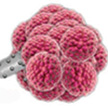 The defenses of the body's immune system tend to destroy synthetic nanoparticles and frequently they are captured and removed from the body within few minutes. This, of course, is a major barrier to the use of nanotechnology in medicine. In order to evade the host immune response, researchers are demonstrating that the combination of nanomaterials and biomimetic strategies can change diverse nanomaterials from 'distinguishable state' to 'camouflage state' and thereby improving technologies for nanomedicine applications.
The defenses of the body's immune system tend to destroy synthetic nanoparticles and frequently they are captured and removed from the body within few minutes. This, of course, is a major barrier to the use of nanotechnology in medicine. In order to evade the host immune response, researchers are demonstrating that the combination of nanomaterials and biomimetic strategies can change diverse nanomaterials from 'distinguishable state' to 'camouflage state' and thereby improving technologies for nanomedicine applications.
Aug 9th, 2022
 Researchers have developed an optothermal platform with five manipulation modes - printing, tweezing, rotating, rolling, and shooting - using a single Gaussian laser beam. Switching between the different modes is achieved by simply tuning the optical power or the distance between laser and object, and can be automated through software programming. This novel multimodal manipulation technique relies on the coordination of multiple thermal forces instead of light-matter interactions, i.e., the mechanism of traditional optical tweezers.
Researchers have developed an optothermal platform with five manipulation modes - printing, tweezing, rotating, rolling, and shooting - using a single Gaussian laser beam. Switching between the different modes is achieved by simply tuning the optical power or the distance between laser and object, and can be automated through software programming. This novel multimodal manipulation technique relies on the coordination of multiple thermal forces instead of light-matter interactions, i.e., the mechanism of traditional optical tweezers.
Jul 25th, 2022
 Researchers have developed an effective nanomedicine for catalytic ROS-scavenging and ultrafast healing of inflammatory wounds. This groundbreaking work holds the potential to pave the way for developing artificial biocatalysts to treat chronic inflammatory diseases, ultimately improving the lives of millions of diabetic patients worldwide.
Researchers have developed an effective nanomedicine for catalytic ROS-scavenging and ultrafast healing of inflammatory wounds. This groundbreaking work holds the potential to pave the way for developing artificial biocatalysts to treat chronic inflammatory diseases, ultimately improving the lives of millions of diabetic patients worldwide.
 Subscribe to our Nanotechnology Spotlight feed
Subscribe to our Nanotechnology Spotlight feed





